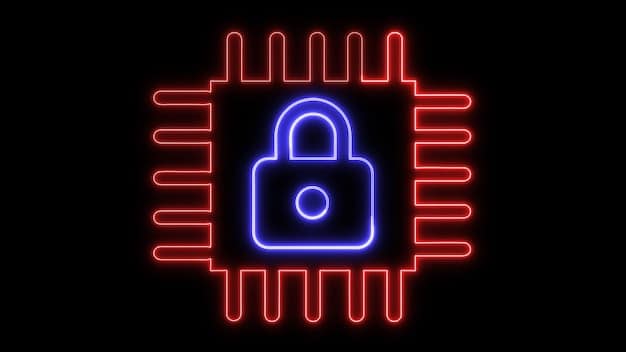Securing the IoT: Cyberattack Prevention for Businesses

Securing IoT devices from cyberattacks is crucial for businesses by implementing robust security measures, including strong authentication, encryption, regular updates, network segmentation, and continuous monitoring to protect sensitive data and maintain operational integrity.
The Internet of Things (IoT) has revolutionized how businesses operate, offering unprecedented connectivity and data insights. However, this increased connectivity also introduces significant cybersecurity risks. It’s crucial for businesses to understand how to secure their IoT devices from cyberattacks to protect their data, reputation, and bottom line.
Understanding the Scope of IoT Security
The proliferation of IoT devices in the business world has created a vast and complex attack surface. From smart thermostats to industrial sensors, these devices are often vulnerable to a variety of cyber threats. Understanding the scope of IoT security is the first step in mitigating these risks.
The Expanding IoT Landscape
The number of IoT devices is growing exponentially, and this trend is expected to continue. This expansion creates new opportunities for cybercriminals to exploit vulnerabilities in these devices.
Common IoT Vulnerabilities
Many IoT devices are designed with minimal security features, making them easy targets for hackers. Common vulnerabilities include weak passwords, unencrypted data transmission, and outdated software.

To better understand the threat landscape, consider these key vulnerabilities:
- Weak Authentication: Default or easily guessable passwords are a common entry point for attackers.
- Lack of Encryption: Unencrypted data transmission exposes sensitive information to interception.
- Outdated Software: Failure to update software leaves devices vulnerable to known exploits.
- Insecure Interfaces: Poorly secured web or mobile interfaces can be exploited to gain control of devices.
Addressing these vulnerabilities requires a comprehensive approach that includes robust security measures and ongoing monitoring.
Implementing Strong Authentication Measures
Authentication is the process of verifying the identity of a user or device. Strong authentication measures are essential for preventing unauthorized access to IoT devices and networks. Implementing multi factor authentication is also a key component into preventing any unwanted access.
Multi-Factor Authentication (MFA)
MFA requires users to provide multiple forms of identification, such as a password and a one-time code from a mobile app. This makes it much more difficult for attackers to gain access to devices, even if they have stolen a password.
Certificate-Based Authentication
Certificate-based authentication uses digital certificates to verify the identity of devices. This method is more secure than password-based authentication, as it is less vulnerable to phishing attacks.
Here are some actionable steps to implement strong authentication:
- Enforce Strong Passwords: Require users to create complex passwords and change them regularly.
- Implement MFA: Enable multi-factor authentication for all IoT devices and user accounts.
- Use Certificate-Based Authentication: Deploy digital certificates for device authentication to enhance security.
- Regularly Audit Access Controls: Review and update access permissions to ensure only authorized users and devices have access.
By implementing these measures, businesses can significantly reduce the risk of unauthorized access to their IoT devices.
Ensuring Data Encryption and Integrity
Data encryption is the process of converting data into an unreadable format, protecting it from unauthorized access. Ensuring data integrity involves verifying that data has not been altered or corrupted during transmission or storage.
End-to-End Encryption
End-to-end encryption ensures that data is encrypted on the device and remains encrypted until it reaches its final destination. This prevents attackers from intercepting and reading data in transit.
Data Integrity Checks
Data integrity checks use cryptographic hash functions to verify that data has not been tampered with. If the hash value of the data changes, it indicates that the data has been altered.

To secure your data effectively, consider these strategies:
- Implement End-to-End Encryption: Use strong encryption protocols to protect data during transmission and storage.
- Use Secure Communication Channels: Ensure all communication between IoT devices and servers is encrypted using protocols like TLS/SSL.
- Regularly Perform Data Integrity Checks: Implement hash functions to verify data integrity and detect any unauthorized modifications.
By implementing data encryption and integrity measures, businesses can protect sensitive information and ensure the reliability of their IoT systems.
Maintaining Regular Software Updates
Software updates often include security patches that fix vulnerabilities in IoT devices. Maintaining regular software updates is crucial for protecting devices from known exploits. It is also paramount to implement network segmentation to control the amount of access to your network.
Patch Management
Patch management involves regularly identifying and installing software updates on IoT devices. This can be a challenging task, as many IoT devices are deployed in remote locations and may not have automatic update capabilities.
Firmware Updates
Firmware updates are updates to the software that controls the hardware of IoT devices. These updates often include critical security patches and performance improvements.
Effective software update management requires the following:
- Automated Patching: Implement automated patch management systems to ensure timely installation of security updates.
- Regular Firmware Updates: Schedule regular firmware updates for all IoT devices.
- Vulnerability Scanning: Conduct regular vulnerability scans to identify devices with outdated software.
By maintaining regular software updates, businesses can significantly reduce the risk of cyberattacks targeting known vulnerabilities.
Network Segmentation and Access Control
Network segmentation involves dividing a network into smaller, isolated segments. This can prevent attackers from moving laterally within a network if they gain access to one device. Access control mechanisms limit who and what can communicate within the network.
VLANs and Firewalls
Virtual LANs (VLANs) and firewalls can be used to segment a network and restrict traffic between different segments. This can prevent attackers from accessing sensitive data or critical systems if they compromise an IoT device.
Zero Trust Architecture
Zero Trust Architecture (ZTA) assumes that no user or device is trusted by default. This means that all users and devices must be authenticated and authorized before they can access network resources.
To implement effective network segmentation and access control:
- Segment IoT Networks: Isolate IoT devices on separate network segments using VLANs and firewalls.
- Implement Zero Trust: Adopt a Zero Trust Architecture to verify every user and device before granting access to network resources.
- Monitor Network Traffic: Continuously monitor network traffic for anomalous activity that could indicate a security breach.
By implementing network segmentation and access control, businesses can limit the impact of a successful cyberattack on their IoT devices.
Continuous Monitoring and Threat Detection
Continuous monitoring involves constantly monitoring IoT devices and networks for signs of cyberattacks. Threat detection systems can identify and alert security personnel to suspicious activity.
Intrusion Detection Systems (IDS)
IDS can detect malicious activity by analyzing network traffic and system logs. These systems can be configured to alert security personnel to suspicious events, such as unauthorized access attempts or malware infections.
Security Information and Event Management (SIEM)
SIEM systems collect and analyze security data from multiple sources, providing a comprehensive view of the security posture of an IoT environment. These systems can help security personnel identify and respond to cyberattacks more quickly.
To ensure robust continuous monitoring and threat detection:
- Deploy Intrusion Detection Systems: Implement IDS to monitor network traffic and system logs for malicious activity.
- Leverage SIEM Systems: Use SIEM systems to collect and analyze security data from various sources.
- Establish Incident Response Plans: Develop and regularly update incident response plans to effectively address security breaches.
By continuously monitoring their IoT devices and networks, businesses can detect and respond to cyberattacks more quickly, minimizing the damage.
| Key Point | Brief Description |
|---|---|
| 🔑 Strong Authentication | Use MFA and certificate-based authentication. |
| 🔒 Data Encryption | Implement end-to-end encryption and integrity checks. |
| 🔄 Regular Updates | Maintain timely software and firmware updates. |
| 🛡️ Network Segmentation | Segment IoT networks and control access. |
FAQ
▼
IoT security is crucial to protect sensitive data, maintain operational integrity, and prevent financial losses. A breach can damage reputation and trust, leading to legal and regulatory consequences.
▼
Common vulnerabilities include weak authentication, lack of encryption, outdated software/firmware, and insecure interfaces. These issues make IoT devices easy targets for cyberattacks and data breaches.
▼
MFA adds an extra layer of security by requiring multiple forms of identification. This reduces the risk of unauthorized access, even if an attacker steals or guesses a user’s password.
▼
Network segmentation divides a network into isolated segments to limit the impact of a breach. If one IoT device is compromised, the attacker’s movement is restricted, protecting other critical systems.
▼
Continuous monitoring helps in detecting and responding to cyberattacks quickly. It involves constantly monitoring IoT devices and networks for suspicious activity, which minimizes potential damage from breaches.
Conclusion
Securing IoT devices from cyberattacks is a complex but essential task for businesses. By implementing strong authentication measures, ensuring data encryption and integrity, maintaining regular software updates, applying network segmentation, and continuously monitoring for threats, businesses can significantly reduce the risk of cyberattacks and protect their valuable data and systems.





